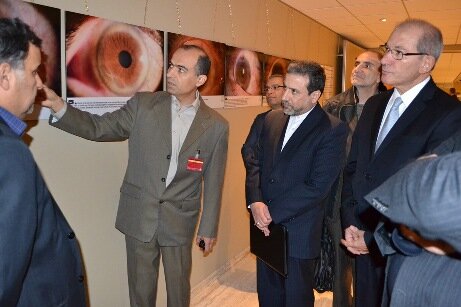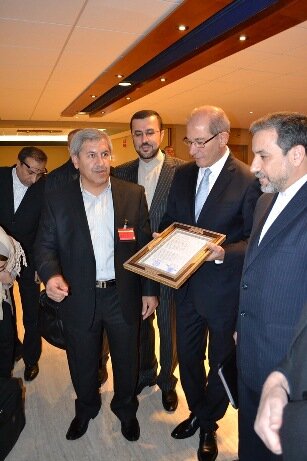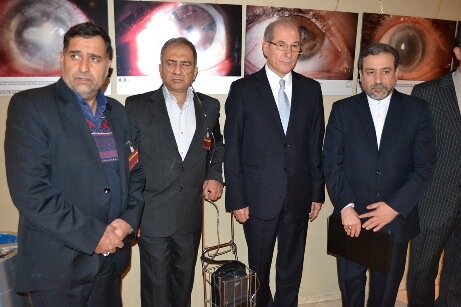The Real Treasure of the Tehran Peace Museum
“The real treasure lies in the testimonies of the survivors who still have wisdom – and learning – and experience – to impart.”
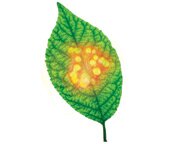 Wednesday April 29th is the United Nations designated Day of Remembrance for Chemical Weapons Victims, which was observed today at the Tehran Peace Museum (TPM). The ceremony, which was organized entirely by the museum’s young cohort of volunteers, included a number of distinguished guests, chemical weapons survivors and their families, staff and friends of the museum.
Wednesday April 29th is the United Nations designated Day of Remembrance for Chemical Weapons Victims, which was observed today at the Tehran Peace Museum (TPM). The ceremony, which was organized entirely by the museum’s young cohort of volunteers, included a number of distinguished guests, chemical weapons survivors and their families, staff and friends of the museum.
The theme of this year’s event was to reflect on the 100 years since the first gas attacks at Ypres in Belgium during the First World War, the chemical weapons attacks during the Iran-Iraq War and the achievements made in the realm of disarmament and finding solutions for future world peace.
Tehran Peace Museum Delegates Participate in Ieper Centenary
 From the 22nd to 24th April, 2015, a number of delegates from the Tehran Peace Museum (TPM) travelled to Ieper in Belgium to participate in the centenary of the first gas attacks there during World War I. The TPM representatives took part in the three-day conference hosted by the city of Ieper called: “A Century of Weapons of Mass Destruction: Enough!”
From the 22nd to 24th April, 2015, a number of delegates from the Tehran Peace Museum (TPM) travelled to Ieper in Belgium to participate in the centenary of the first gas attacks there during World War I. The TPM representatives took part in the three-day conference hosted by the city of Ieper called: “A Century of Weapons of Mass Destruction: Enough!”
Mr. Hassan Hassani Sa’di, Iran-Iraq war veteran, chemical weapons survivor and TPM guide, was invited to speak about his personal experiences of exposure to chemical weapons to the many gathered dignitaries, ambassadors, mayors and representatives of disarmament organizations.
Another survivor of chemical warfare died in silence...
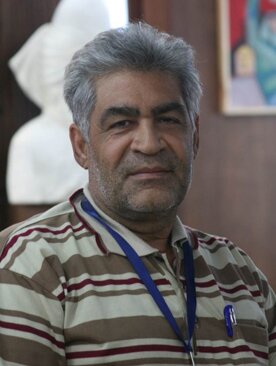 The Tehran Peace Museum regrets to announce the passing of friend and volunteer, Mr. Jahanshah Sadeghi. Mr. Sadeghi died of respiratory failure due to late toxic effects of Mustard Gas, on Monday March 16th in his hometown of Harsin, Kermanshah. He will be sadly missed by all of us here at the museum.
The Tehran Peace Museum regrets to announce the passing of friend and volunteer, Mr. Jahanshah Sadeghi. Mr. Sadeghi died of respiratory failure due to late toxic effects of Mustard Gas, on Monday March 16th in his hometown of Harsin, Kermanshah. He will be sadly missed by all of us here at the museum.
Please click here to read Jahanshah's obituary.
Tehran Peace Museum / SCWVS delegation met with Mayor of Hiroshima
 From August 3 to 8, a delegation of the Society for Chemical Weapons Victims Support (SCWVS) from Iran visited Hiroshima and met with President Matsui, Mayor of Hiroshima on August 7. The Tehran Peace Museum, founded by the SCWVS, conducted an active campaign to invite Iranian mayors to join Mayors for Peace and successfully achieved a 270 city increase of the number of member cities in Iran in the past one-year period.
From August 3 to 8, a delegation of the Society for Chemical Weapons Victims Support (SCWVS) from Iran visited Hiroshima and met with President Matsui, Mayor of Hiroshima on August 7. The Tehran Peace Museum, founded by the SCWVS, conducted an active campaign to invite Iranian mayors to join Mayors for Peace and successfully achieved a 270 city increase of the number of member cities in Iran in the past one-year period.
27th Anniversary of Sardasht Gas Attack

27 years ago on 28th of June, 1987, Sardasht, an Iranian town was targeted by Mustard gas bombs by Iraqi forces. Many were killed immediately and thousands of survivors still suffer from long term health effects and disabling illnesses.
Below you can find more details about the gas attack, the life of survivors and recently issued statements by international figures:
- Details of gas attack by Professor. Forutan, Shahid Beheshti University
- Statement by Director-General of the OPCW
A memorial ceremony on the “Day of Remembrance for all Victims of Chemical Warfare” was held at TPM
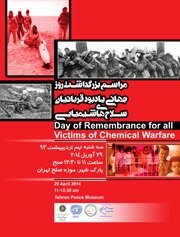
A memorial ceremony on the “Day of Remembrance for all Victims of Chemical Warfare” was held at Tehran Peace Museum on 29 April 2014.
In the event which was organized by the Peace Museum, the Society for victims of Chemical weapons –SCWVS- and the UN information Center –UNIC- , many people including representatives of International organizations, Ambassadors and diplomats, survivors of chemical warfare and their families and several activists and NGO members attended.
To see photos of the event click here.
Commemorating Day of Remembrance for all Victims of Chemical Warfare
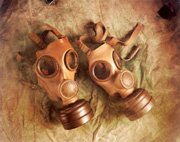 The observance on "Day of Remembrance for all Victims of Chemical Warfare" would be held by Tehran Peace Museum and United Nations Information Center in Tehran on Tuesday , April 29 from 11 a.m. to 12:30. The message of "United Nations" Secretary General and "Organization For the Prohibition Of Chemical Weapon " Director- General would be read in this ceremony.
The observance on "Day of Remembrance for all Victims of Chemical Warfare" would be held by Tehran Peace Museum and United Nations Information Center in Tehran on Tuesday , April 29 from 11 a.m. to 12:30. The message of "United Nations" Secretary General and "Organization For the Prohibition Of Chemical Weapon " Director- General would be read in this ceremony.
According to the decision of Conference of State Parties of the OPCW and the UN General Assembly Resolution, a memorial Day of Remembrance for all Victims of Chemical Warfare would be observed on 29 April each year. This Ceremony is as an opportunity to pay tribute to victims of Chemical Weapons.
For more information about this day, please click here.
Ahmet Üzümcü accepts the Nobel Peace Prize for OPCW in Oslo
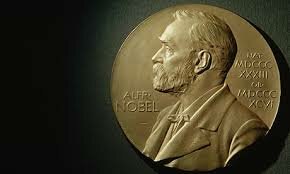 The annual award ceremony for the Nobel Peace Prize took place in Oslo, Norway on Tuesday 10th of December, 2013. This year’s recipient was the OPCW (the Organisation for the Prohibition of Chemical Weapons).
The annual award ceremony for the Nobel Peace Prize took place in Oslo, Norway on Tuesday 10th of December, 2013. This year’s recipient was the OPCW (the Organisation for the Prohibition of Chemical Weapons).
The OPCW Director-General, Mr. Ahmet Üzümcü, officially accepted the prize on behalf of the organization. Mr Üzümcü was accompanied by a delegation of ambassadors from 10 state parties. In addition, Mr Kazem Gharibabadi, the Iranian Ambassador to The Hague and Iran’s permanent representative to the OPCW, was among the delegates representing countries from Asia.
During his speech at the award ceremony, Mr. Üzümcü shared the following sentiments. “It is enough to look at the pictures of victims to understand the agony that they must have gone through – from Ieper in Belgium to Sardasht in Iran, from Halabja in Iraq to Ghouta in Syria”.
Meeting with the winner of the 2013 Nobel Peace Prize in the Hague
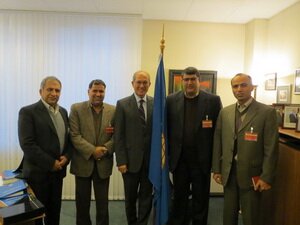 Members of the Tehran Peace Museum's board met with Director General of the OPCW (the winner of the 2013 Nobel Peace Prize) in the Hague on 06 December.
Members of the Tehran Peace Museum's board met with Director General of the OPCW (the winner of the 2013 Nobel Peace Prize) in the Hague on 06 December.
OPCW Conference in the Hague: Photo Exhibition of the Long Term Effects on the Eye of Chemical Weapons. Victims from Sardasht were present at the exhibition
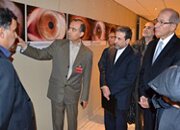
At the recent OPCW (Organization for the Prohibition of Chemical Weapons) annual conference held in The Hague from 2 to 6 December, 2013, the Tehran Peace Museum and the Society for Chemical Weapons Victims Support (SCWVS) displayed a photo exhibition of the long term effects of mustard gas on the eyes. This exhibition was the first of its kind in the world and was widely seen by the participants of the conference.
Among the visitors at the opening of the exhibition on the first day of the conference, were Ahmet Üzümcü, the OPCW Director General, and Abbas Araghchi, the Deputy of the Minister of Foreign Affairs. The exhibition, which ran until Friday 6 December, 2013, was visited by a large number of ambassadors, high ranking diplomatic delegations from many countries, as well as officers from international organizations.
The aim of holding such an exhibition was advocacy on the impact of chemical weapons and the long term effects on the victims’ health. Following an initiative of SCWVS, unique photographs of these particular long term effects were put on display. The photographs chart the gradual damage, after a period of 20 to 30 years, to the eye tissue as a result of being exposed to the dangerous chemicals contained in mustard gas.
Iran has more than 70 thousand victims of mustard gas suffering from such long term impacts as opacity of the cornea, destruction of the eye tissue and the gradual loss of sight.
Representatives of Iranian chemical weapons victims from Sardasht were also amongst the participants at the conference. The conference delegates and visitors to the exhibition had a unique opportunity to listen to the victims’ first-hand testimonies and to hear for themselves about the difficulties of daily life for chemical weapons victims. The representatives from Sardasht shared their message of peace and their hope for a world without weapons of mass destruction.







